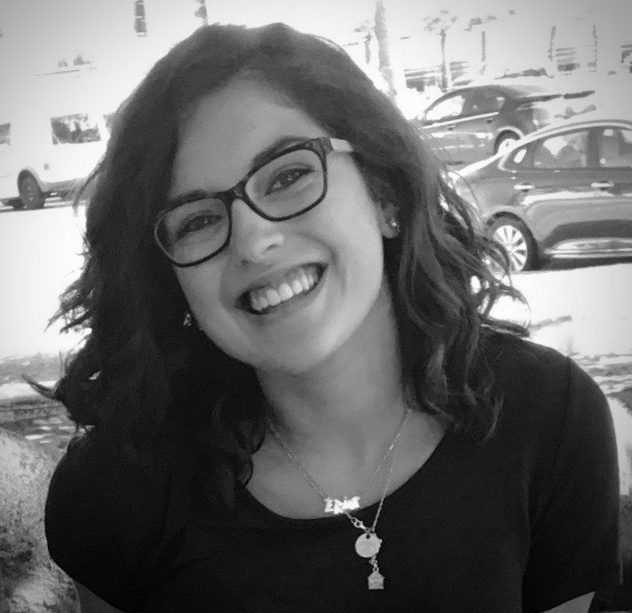 Jonathan Vickburg; Photo courtesy of Vickburg.
Jonathan Vickburg; Photo courtesy of Vickburg. Gilroy. El Paso. Dayton. Three mass shootings in less than a week. Many people are feeling overwhelmed, anxious and helpless as the number of mass shootings in the United States to date this year — 250 — surpasses the number of days we’ve had in 2019.
How do we cope with these ongoing massacres? And is there anything practical we can do?
At Cedars-Sinai Medical Center, experts have spent the past 38 years helping people deal with trauma through programs that include Share & Care and Stop the Bleed. To date, these programs have helped more than 1,600 people in Southern California cope and even save lives during traumatic incidents.
Cedars-Sinai marriage and family therapist Jonathan Vickburg, who is part of the Share & Care program, works with children in schools to help them feel safe following tragedies. Vickburg spoke with the Journal about coping mechanisms geared specifically toward children in traumatic times.
Jewish Journal: When events like these occur, do you see an increase in patients with anxiety?
Jonathan Vickburg: In my private practice, I don’t necessarily see an increase, but I do see every single client starts talking about free-floating anxiety. Even if they are coming here for a different reason, it’s definitely a primary focus and the same thing happens with children in schools, as well.
JJ: What is the age range of children you treat?
JV: [Transitional kindergarten] all the way up to high school — 18- or 19-year-old students.
JJ: I can’t imagine how you talk to kids and teens about these things, especially now since there are more lockdown drills.
JV: Right. Absolutely. And it’s different for different ages and that’s what I tell parents, as well: First of all, it’s important to keep an open conversation. A lot of parents feel like, “Well, if I don’t talk about it, it will protect my child from that.” As we know, with the advent of digital media and social media, kids are going to hear. Maybe not preschool kids but at least elementary, middle and high school students, so I think it’s important to talk about that. I always encourage [parents] to limit screen time. Even for us as adults to see the images and hear the story over and over, it becomes very traumatizing.
Students will find out about it, so to have a preemptive conversation that’s age appropriate that’s just factual information, not giving graphic details, and giving them an open space to talk about it and answer questions honestly is important. With the older kids, really have a more detailed conversation and give them a chance to discuss it and share their feelings.
JJ: What is the appropriate way to help someone directly involved in a traumatic incident?
JV: I think that is the opportunity where we get to practice our empathy skills. Even though we don’t know what they are going through, we can use our imagination to sit with them in that moment; by giving them that time and attention, it’s really important. With kids, and with adults, too, it’s important to maintain their habits. Having a schedule helps us feel safer. If somebody knows somebody who was involved in the shooting, there’s the trauma of “this can happen to me,” but there’s also that grief. It becomes much more complex and complicated trauma.
JJ: Do these routines help kids cope with their own emotions?
JV: That’s a conversation I also have with parents. It’s important for them to be there for their kids and it may help a little bit but they can’t just rely on that. Parents need to find their own ways to cope so their free-floating anxiety isn’t being transferred onto their kids. The message that’s sent is [if] the parents are really unable to control emotions and are afraid to go out in places, if the world is unsafe for my parents, then I know that it is really unsafe for me. So it’s really important for parents to take care of themselves and have those conversations, whether it’s [through] religion, a therapist, close friends, activities, whatever they can do so they can be there for their child.
JJ: Can you talk about Cedars-Sinai’s Share & Care program?
JV: Suzanne Silverstein started it. We realized a lot of kids throughout the schools have different traumas, different issues that come up, whether it’s grief and loss, bullying, dealing with anger and just dealing with feelings. Lately, there’s been a lot more anxiety just with testing and other issues that come up, so it’s a way through art therapy for kids to process their feelings and talk about it. It’s a 12-week program with the school.
JJ: How many schools have this program?
JV: Right now, we have 26 schools we are in and we have 30 schools where we connect by sending information. We try to put our arms around the whole school community, so we have means for our principals. We will meet with teachers, have parent workshops and have counselors in the schools meeting with kids.
JJ: You’re also a magician. Why is it important that people have a creative outlet?
JV: I think all of us need to find that little creative outlet. For some people, it’s not creativity, it’s an engineering and logical outlet, but [it’s] that element of self-care. It becomes about imagination and wonder that you can have with a kid. I see it with my kids I work with, too, when they are doing art or when they are building something with clay. All of a sudden, they are present and in the now and able to connect in a much different way.























 More news and opinions than at a Shabbat dinner, right in your inbox.
More news and opinions than at a Shabbat dinner, right in your inbox.